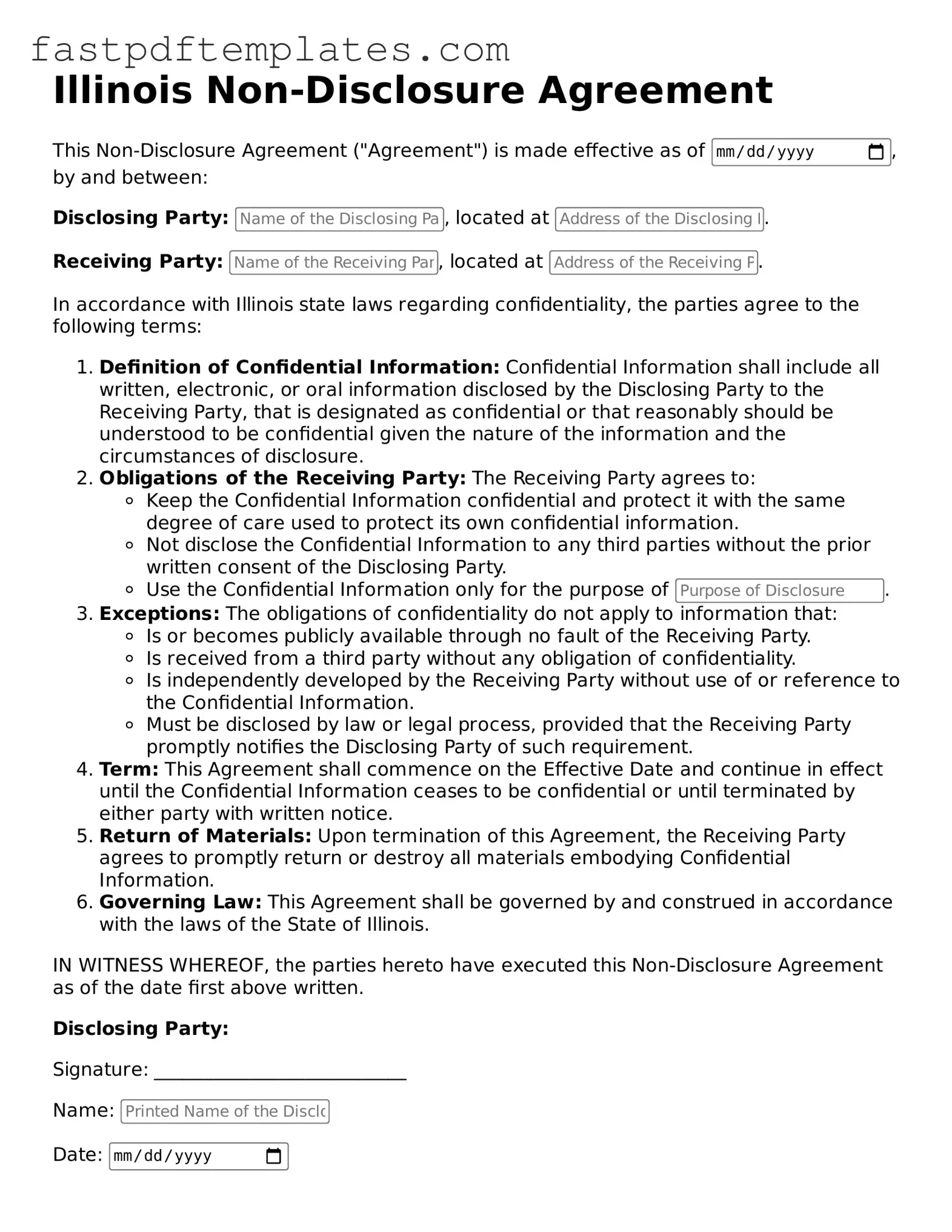A Confidentiality Agreement serves a similar purpose to a Non-disclosure Agreement (NDA) in Illinois. Both documents are designed to protect sensitive information shared between parties. A Confidentiality Agreement may be used in various contexts, such as employment or business partnerships, to ensure that proprietary information remains secure. Like an NDA, it typically outlines what information is confidential, the obligations of the parties involved, and the consequences for breach of the agreement.
A Proprietary Information Agreement is another document that aligns closely with an NDA. This type of agreement focuses specifically on protecting proprietary information, which can include trade secrets, business strategies, or product designs. Both agreements require the receiving party to maintain confidentiality and restrict the use of the disclosed information to specific purposes. The language in both documents emphasizes the importance of safeguarding intellectual property.
An Employment Agreement often includes confidentiality clauses that mirror those found in NDAs. When employees are hired, they may be required to sign an Employment Agreement that specifies their responsibilities regarding confidential company information. This ensures that employees understand their obligations to protect sensitive data during and after their employment. Both documents aim to prevent unauthorized disclosure of information that could harm the business.
A Mutual Non-disclosure Agreement is similar to an NDA but involves two parties sharing confidential information with each other. This type of agreement is particularly useful in negotiations where both parties may disclose sensitive information. Like a standard NDA, a Mutual Non-disclosure Agreement outlines the definitions of confidential information and the obligations of both parties to protect that information.
A Non-compete Agreement can also be related to NDAs, although its primary focus is on restricting competition. However, it often includes confidentiality provisions to protect sensitive business information that an employee might encounter. Both agreements aim to prevent the misuse of proprietary information, ensuring that former employees do not take trade secrets to competitors.
A Non-solicitation Agreement shares similarities with NDAs in that it protects business interests. This type of agreement prevents one party from soliciting the other party's clients or employees after a business relationship ends. While the focus is different, both documents serve to protect valuable business information and relationships from being exploited by former associates.
A Licensing Agreement may also contain confidentiality clauses akin to those found in NDAs. When a business licenses its products or technology to another party, it often requires the licensee to keep certain information confidential. This ensures that proprietary technology or business methods are not disclosed to competitors, similar to the protective measures outlined in an NDA.
An Engagement Letter, often used in professional services, can include confidentiality provisions similar to those in NDAs. When clients engage professionals, such as lawyers or consultants, they may share sensitive information. The Engagement Letter will typically stipulate that the service provider must keep this information confidential, paralleling the obligations set forth in a Non-disclosure Agreement.
A Settlement Agreement may contain confidentiality clauses that align with NDAs, particularly in disputes. When parties reach a settlement, they often agree to keep the terms confidential to protect their reputations and business interests. Both documents emphasize the importance of maintaining secrecy regarding sensitive information, ensuring that the details of the settlement are not disclosed to outside parties.
Finally, a Data Use Agreement is similar to an NDA in that it governs how data is shared and used between parties. This document is especially relevant in research and data-sharing contexts, where sensitive data must be protected. Both agreements establish the parameters for how information can be used and the obligations of the parties to safeguard that information from unauthorized access or disclosure.
